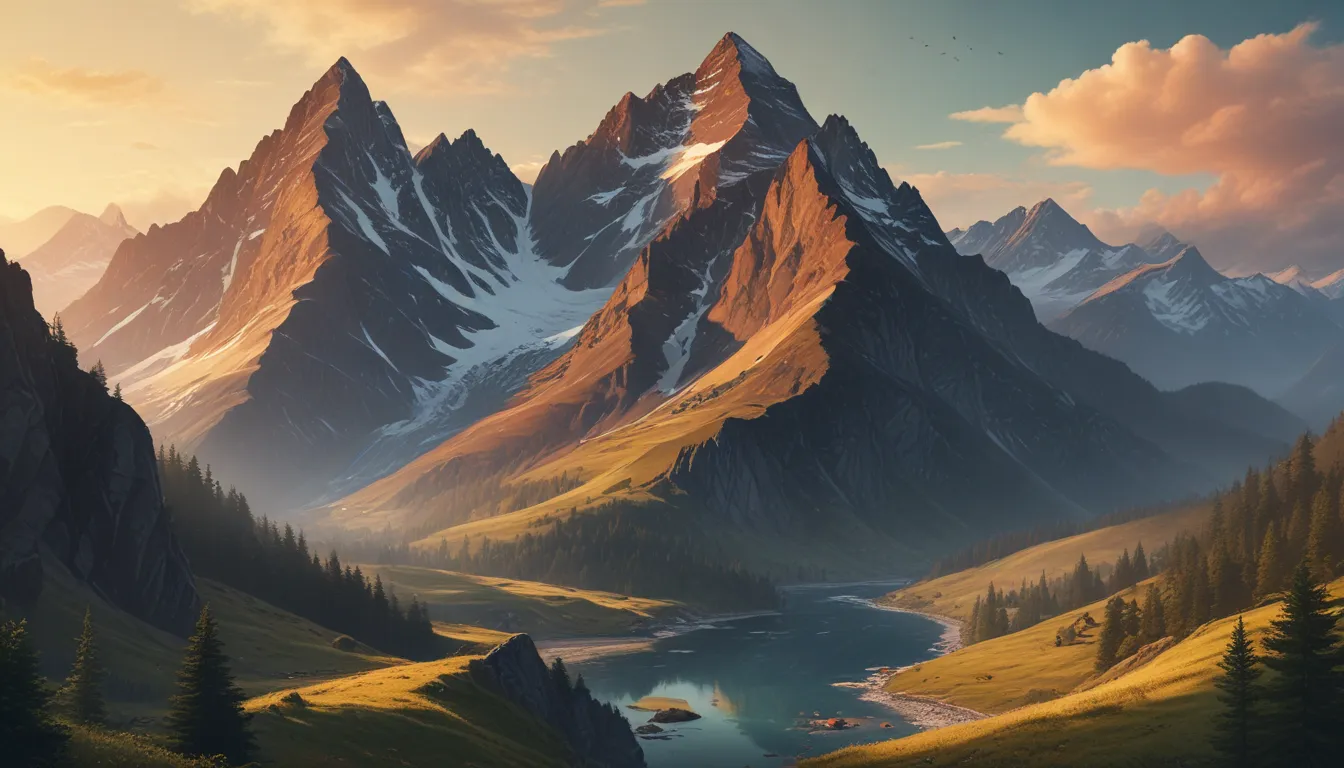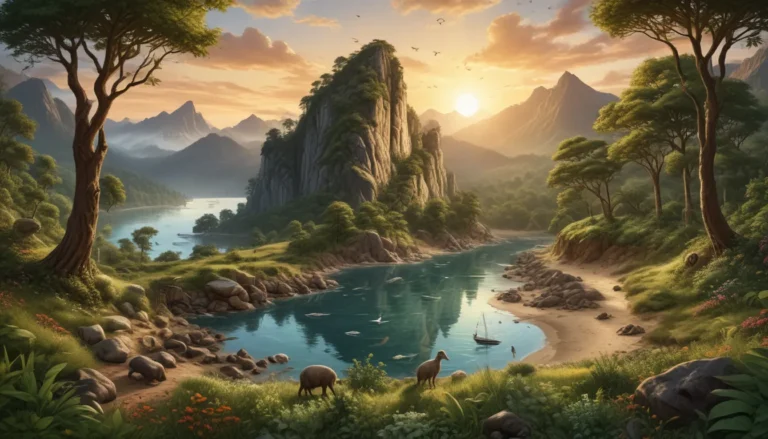A Note About Images: The images used in our articles are for illustration purposes only and may not exactly match the content. They are meant to engage readers, but the text should be relied upon for accurate information.
Mountain ranges are some of the most captivating and awe-inspiring natural wonders on our planet. They can be found on every continent, each with its own unique features and history. From the mighty Himalayas to the iconic Rockies, these towering giants have fascinated and intrigued adventurers, scientists, and nature enthusiasts for centuries. In this article, we will uncover 17 extraordinary facts about mountain ranges that will deepen your appreciation for these majestic formations. Get ready to be amazed as we explore fascinating details about their formation, diversity, and significance to our planet’s geological and ecological systems. So grab your hiking boots and get ready to embark on a journey through the breathtaking world of mountain ranges.
The Majesty of Mountain Ranges
Mountain ranges are not just physical formations but also hold a significant place in our world’s geography and natural beauty. Let’s delve into the extraordinary facts that make each range unique and special.
The Himalayas: The Highest Peaks on Earth
The Himalayas, located in Asia, are renowned for hosting the tallest peaks on Earth, including Mount Everest, the highest point above sea level. These majestic mountains, with their snow-capped peaks, have captured the imagination of adventurers for generations.
The Andes: A South American Wonder
Spanning over 4,300 miles, the Andes mountains run through seven countries in South America, offering diverse landscapes and cultures. From the lush valleys of Colombia to the arid deserts of Peru, the Andes are a testament to the continent’s rich natural heritage.
The Rockies: North America’s Towering Giants
The Rocky Mountains extend over 3,000 miles from Canada to the United States, passing through picturesque landscapes and national parks. These rugged mountains provide a home to diverse wildlife and offer endless opportunities for outdoor adventures.
The Alps: Europe’s Winter Wonderland
Stretching across several European countries, the Alps offer breathtaking scenery and world-class opportunities for skiing and mountaineering. Whether you’re exploring the Swiss Alps or the French Alps, you’ll be mesmerized by the beauty of these snow-capped mountains.
The Appalachian Mountains: A Testament to Time
Formed around 480 million years ago, the Appalachian Mountains extend from Canada to the United States, boasting rich biodiversity and stunning natural beauty. These ancient mountains have witnessed the passage of time and hold stories of a bygone era.
The Atlas Mountains: A Dramatic Backdrop
The Atlas Mountains divide the Mediterranean and Atlantic coastlines in North Africa, providing a dramatic backdrop to the region. From the red sands of Morocco to the lush forests of Algeria, the Atlas Mountains are a sight to behold.
The Great Dividing Range: Australia’s Natural Barrier
Stretching over 2,300 miles, the Great Dividing Range acts as a natural barrier between the eastern coastline and the arid interior of Australia. This mountain range is home to unique flora and fauna found nowhere else on the continent.
The Karakoram Range: A Himalayan Jewel
The Karakoram Range, located in Pakistan and China, is home to the second highest peak in the world, K2. With its snow-capped peaks, glaciers, and deep valleys, the Karakoram Range is a paradise for mountaineers and adventurers.
The Ural Mountains: A Natural Boundary
The Ural Mountains separate Europe from Asia, stretching over 1,500 miles. This range not only acts as a geographical boundary but also provides a habitat for a variety of plant and animal species unique to the region.
The Drakensberg Range: A World Heritage Site
UNESCO recognized the Drakensberg Range in South Africa as a World Heritage Site due to its rich biodiversity and cultural significance. From ancient rock art to stunning landscapes, this range is a treasure trove of natural wonders.
The Sierra Nevada Range: California’s Tallest Peak
The Sierra Nevada Range in California is home to the tallest peak in the contiguous United States, Mount Whitney. This range attracts outdoor enthusiasts with its hiking trails, wildlife, and scenic beauty.
The Tien Shan Range: Central Asia’s Alpine Paradise
The Tien Shan Range in Central Asia is known for its breathtaking alpine lakes and stunning landscapes. Whether you’re exploring Kyrgyzstan, Kazakhstan, or China, you’ll be mesmerized by the beauty of this mountain range.
The Southern Alps: New Zealand’s Fjord Country
The Southern Alps in New Zealand are famous for their awe-inspiring fjords, including Milford Sound and Doubtful Sound. These natural wonders draw visitors from around the world to witness their breathtaking beauty.
The Dinaric Alps: Europe’s Hidden Gem
The Dinaric Alps, located along the eastern Adriatic coast, offer stunning views of the Mediterranean Sea. This range is a hidden gem, with its rugged peaks and diverse ecosystems waiting to be explored.
The Taurus Mountains: Turkey’s Ancient Heritage
The Taurus Mountains in Turkey are rich in ancient history and cultural significance. From ancient ruins to picturesque landscapes, this range is a testament to the civilizations that once thrived in the region.
The Zagros Mountains: Iran’s Geologic Spine
The Zagros Mountains in Iran are often referred to as the “spine of Iran,” with their rugged peaks and deep valleys. This range not only holds geological significance but also serves as a melting pot of diverse ethnic groups and ancient cultural traditions.
The Carpathian Mountains: Europe’s Wildlife Haven
The Carpathian Mountains in Eastern Europe are known for their mystical folklore and rich wildlife. From brown bears to lynx and wolves, this range is a haven for nature enthusiasts and wildlife photographers.
Exploring the World of Mountain Ranges
Mountain ranges are not just geological formations but living ecosystems that play a crucial role in shaping our planet’s landscapes and supporting diverse habitats. From the highest peaks to the lush valleys, each range has its own story to tell and wonders to reveal. As you embark on your next adventure in the mountains, take a moment to appreciate the extraordinary facts that make these natural wonders so captivating and inspiring.
Conclusion: Embracing the Beauty of Mountain Ranges
In conclusion, mountain ranges are more than just physical features on a map; they are living, breathing entities that hold a wealth of natural wonders and stories waiting to be discovered. From the highest peaks to the diverse wildlife that inhabits these majestic ranges, mountain ranges have a unique way of captivating our imagination and reminding us of the power and resilience of nature. As you traverse through the mountains, remember to cherish the beauty that surrounds you and the intricate ecosystems that thrive in these rugged landscapes. Embrace the wonders of mountain ranges and let their beauty inspire you to explore, discover, and preserve the natural world for generations to come.






